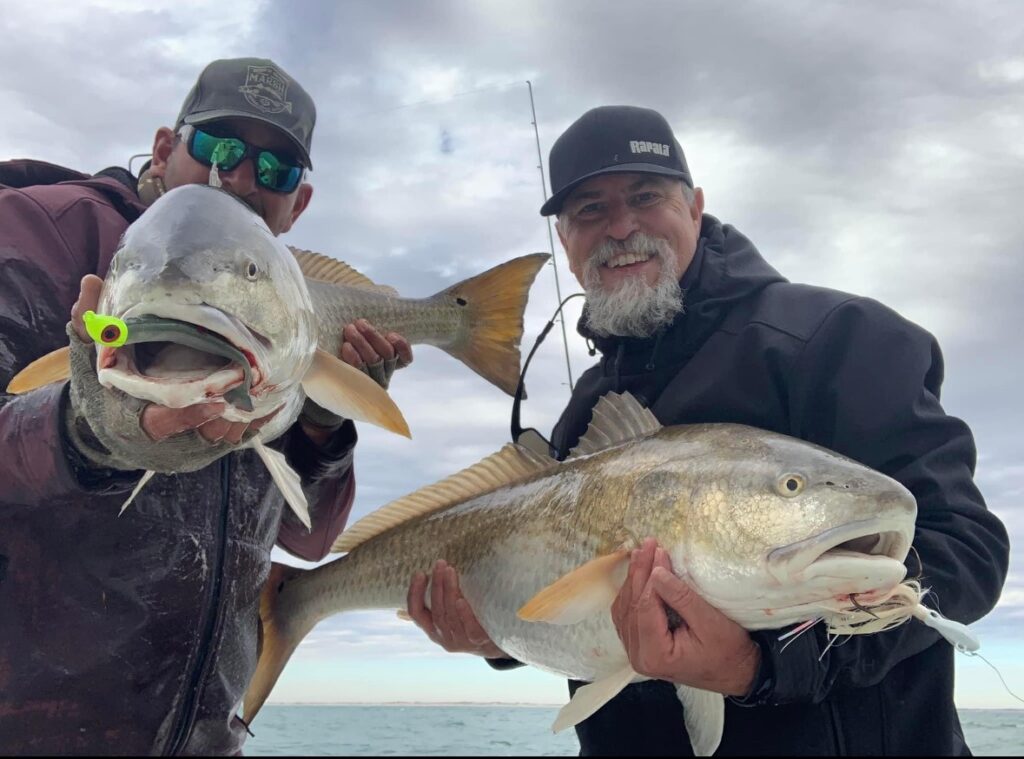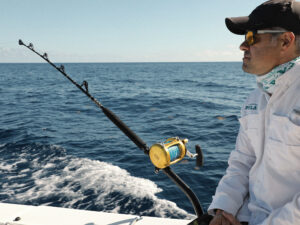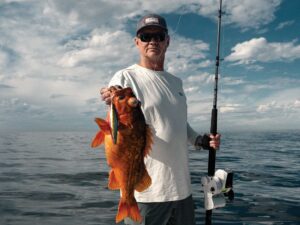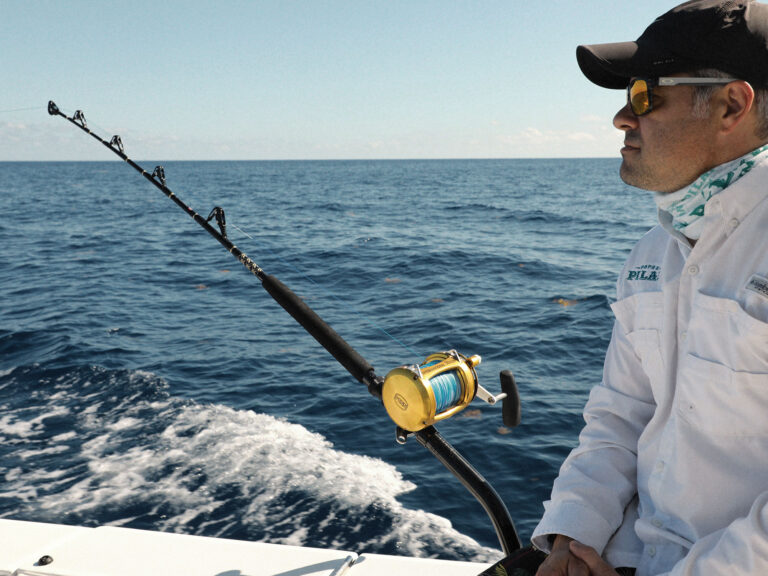
Every year I tend to complain about winter, but secretly a part of me looks forward to the cooler weather of our shoulder season here on North Carolina’s Crystal Coast. As crowds thin out our local waters become gin clear, letting an angler see the bottom in 10 feet of water in many locations. The closer you are to inlets and their rhythmic tidal flushes, the better conditions can be for my favorite style of fishing, sight casting. If the wind picks up causing visibility to suffer you can still fall back to likely ledges and edges you spot on the clear days, a type of fishing often called prospecting.
The past couple of weeks on the North Carolina coast Capt. Joe Tunstall of Carolina Traditions Guide Co. has experienced excellent conditions for both sight casting and prospecting tactics playing out off the beach and back in the marshes surrounding Cape Lookout National Seashore. The mild winter has offered plenty of sunny days pushing air and water temperatures up, and on those special days redfish love to push out to the surf or back into creeks and bays, especially those with a dark muddy bottom.
The darker substrate of creeks and shallow bays tends to hold heat and warm up quickly, especially in the late day sun. A hard-packed sand flat off the beach can do the same thing. It’s amazing how much the water temps may rise if you are in the right location. Compared to the surrounding holes and sloughs anglers often fish in the fall, you can find 4 to 5 degrees difference in water temperature. The reds instinctively know how to seek out that warmer water, which increases their metabolism and encourages them to feed.
School is in Session

Climatic conditions concentrate the fish into these prime winter habitats and it’s possible for anglers to find schools of hundreds of fish huddled up in the next couple months. Fishermen with a keen eye can often spot these schools by looking for movement or pushes in shallow water and by identifying color changes when the water is clean. The more you search, the more you begin to identify patterns in different locations. Having a good pair of polarized sunglasses is key to sight fishing.
When fishing local estuaries this time of year, Tunstall prefers to utilize his shallow water skiff or a kayak. He runs his boat up close to shore on calm days and searches for schools of reds just off the beach. Sometimes he will reverse surf fish from the boat, casting back toward shore, though he often anchors up and wades once he finds the right zone. Tunstall reminded me during a recent trip that no matter where you are fishing, the most important thing is to quietly cover ground when on the prowl. A trolling motor or push pole is essential to help one maneuver the target area.
Casting to likely holding zones from shallow areas can be a very successful strategy. Threats to the larger red drum we are after typically come from deeper water, so if you take a shallow approach the fish are less likely to sense your presence as you cast out into slightly deeper water — it’s a lot like a game of hide and seek. Carefully approach the likely holding area, spot happy fish, watch them swim and turn on your lure and then break away from the school peeling drag.
“In these sight casting situations, it is essential to use a lightweight presentation so your cast doesn’t spook the school” says Tunstall. In shallow water, accurate casts are key. Too far away and the fish won’t see it, too close you hit them on the head, alerting them to your intentions. It’s always helpful if you can determine which direction the fish are moving so you can lead them to your presentation. Sometimes you get lucky and manage to present the lure out in front of a hungry redfish in less than a foot of water. When they eat right in front of you, it’s as good as it gets!
Down East Secrets to Success

Another tip Tunstall was sure to share, “There needs to be some sort of food source available for the fish to stay in the area. While they don’t have to eat much in the winter, they do need an occasional meal.” Often, it’s small baitfish or crabs that overwinter in the area. Find water that consistently holds food though the winter and you are well on your way. Try to match your lure to the bait you are seeing. A lightly weighted soft plastic with some flash like a Hyperplastic Dartspin or DOA Shrimp works well for sight fishing opportunities. It is hard to find a better prospecting lure for winter reds than an Aqua Dream weedless gold spoon as you can cover a lot of ground quickly with each long cast.
The final bit of advice from Capt. Tunstall? “Keep in mind as a big front approaches the reds somehow know it. Look for the warm day right before the system moves through and try to time your trip to the window when the winds switches and it may all come together.” They often feed with reckless abandonment on those special days as they sense environmental factors will soon be changing. Just make sure to wear an outer layer that is both windproof and water resistant as there are times you must cross big water to get to the right spots. If you dress warm and layer properly with quality clothing, there is no need to let the winter blues set in when the resident reds are biting!









